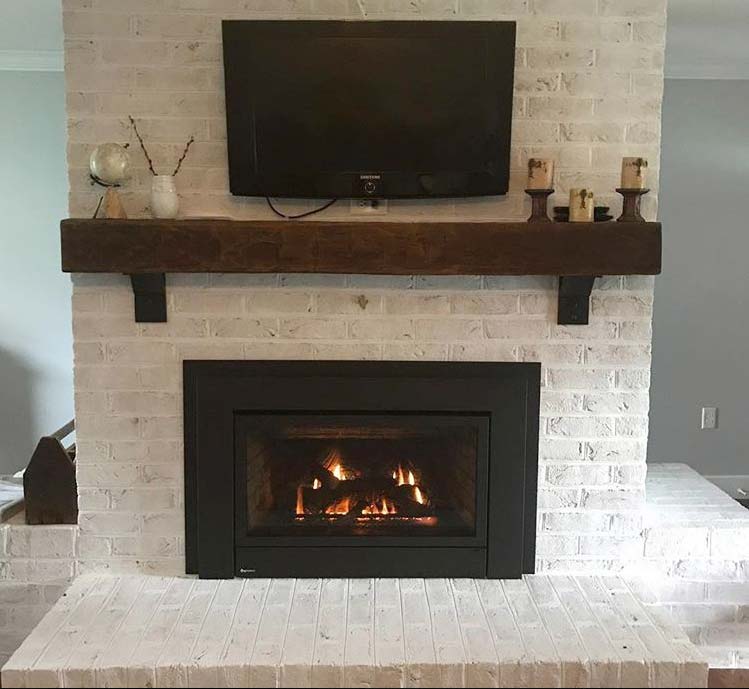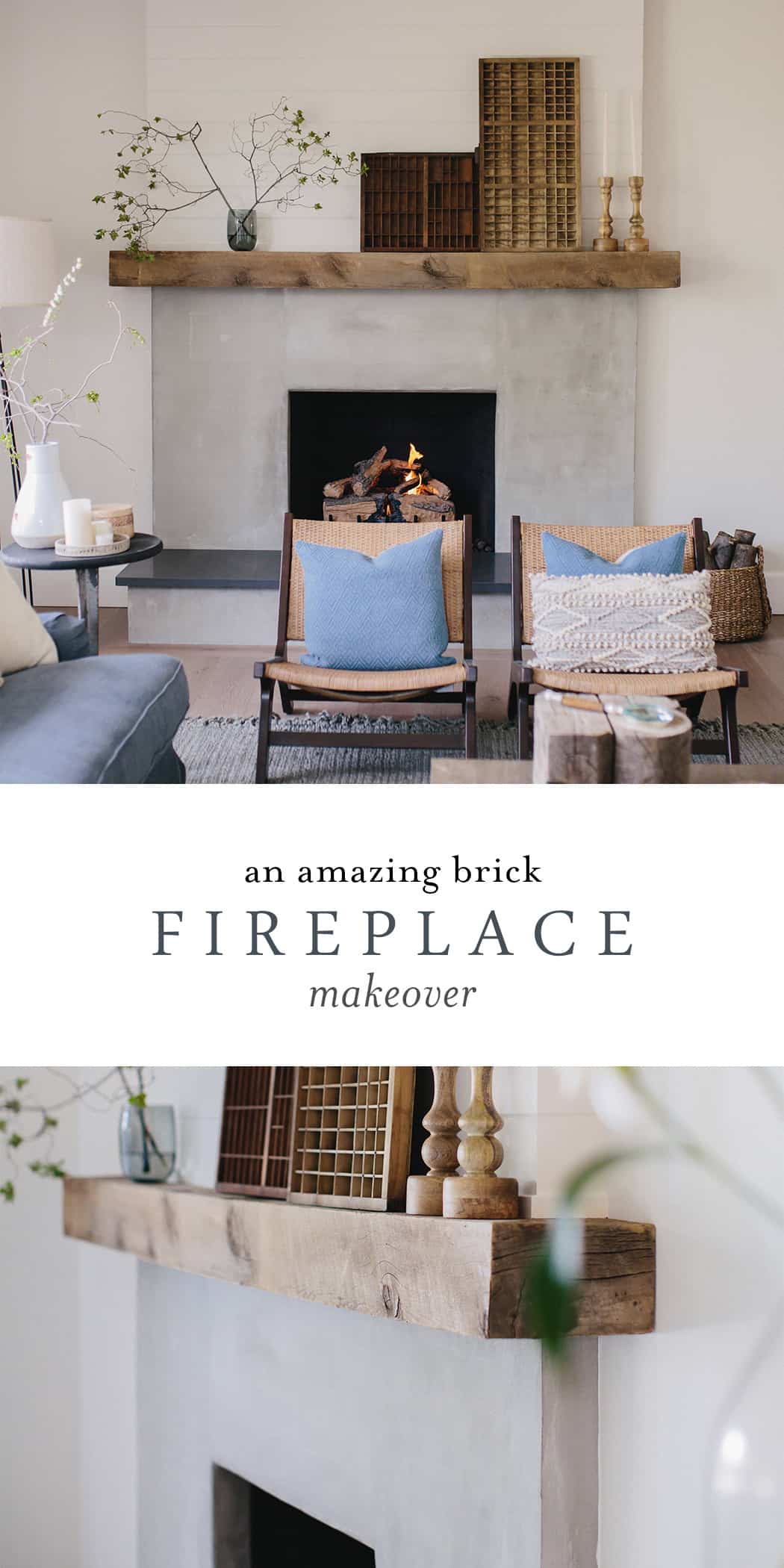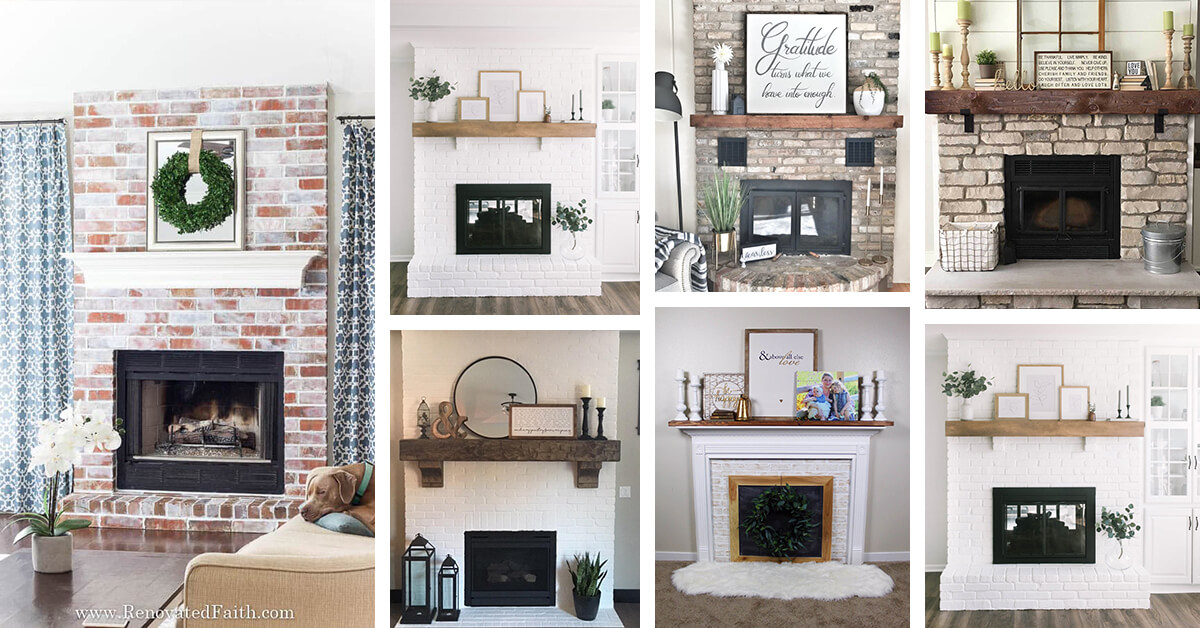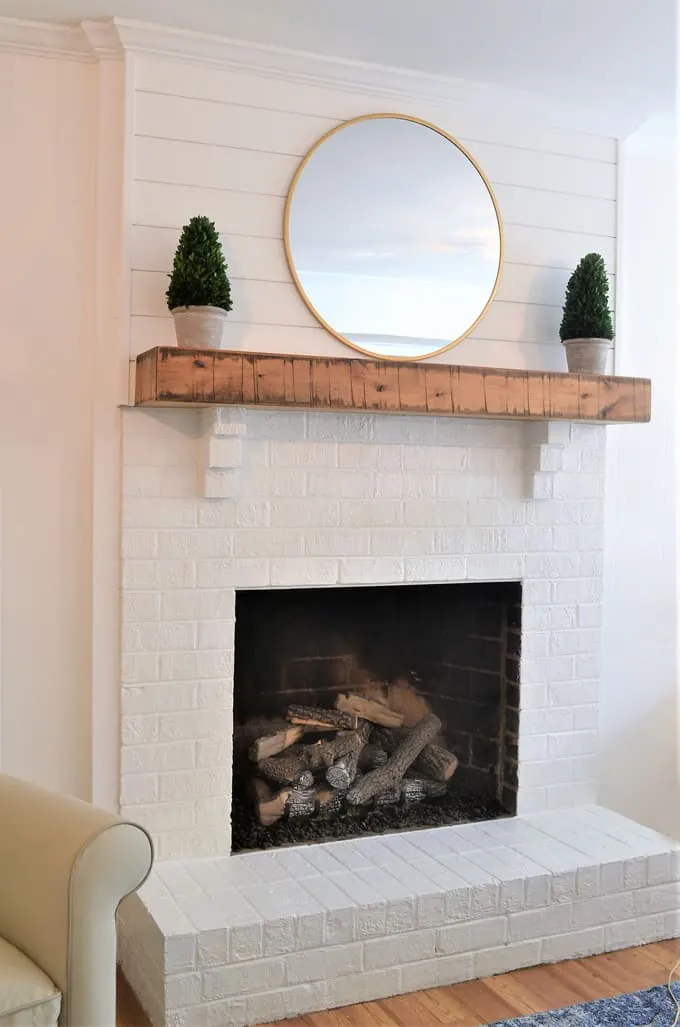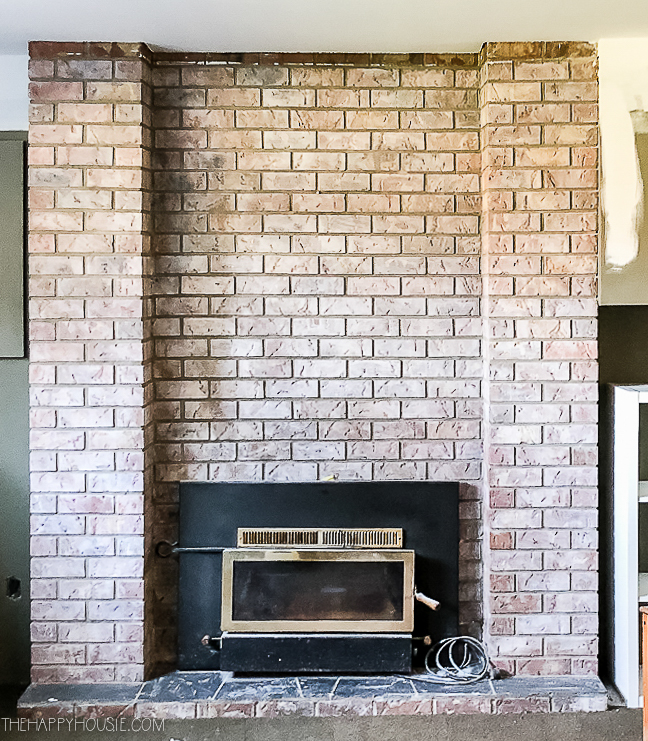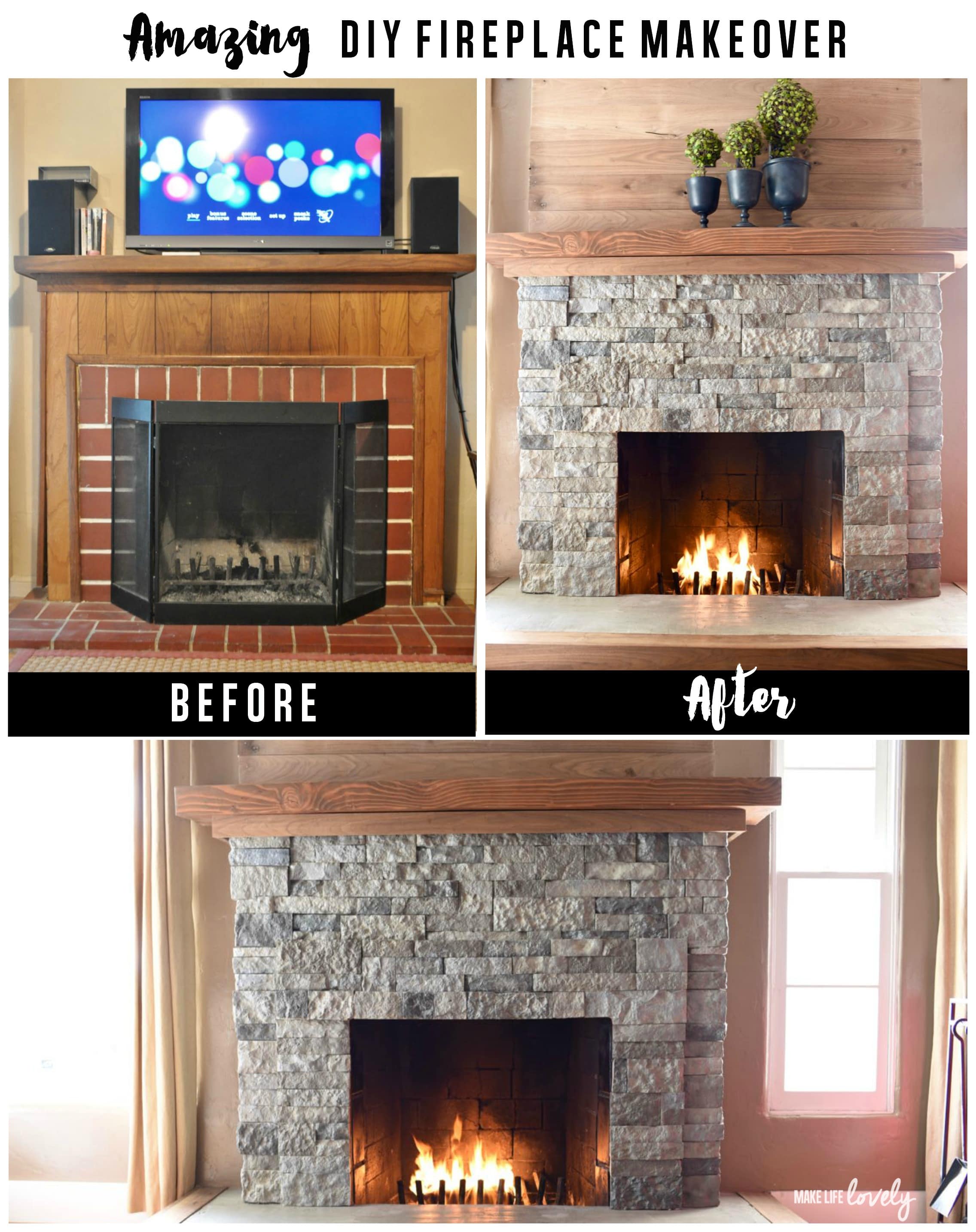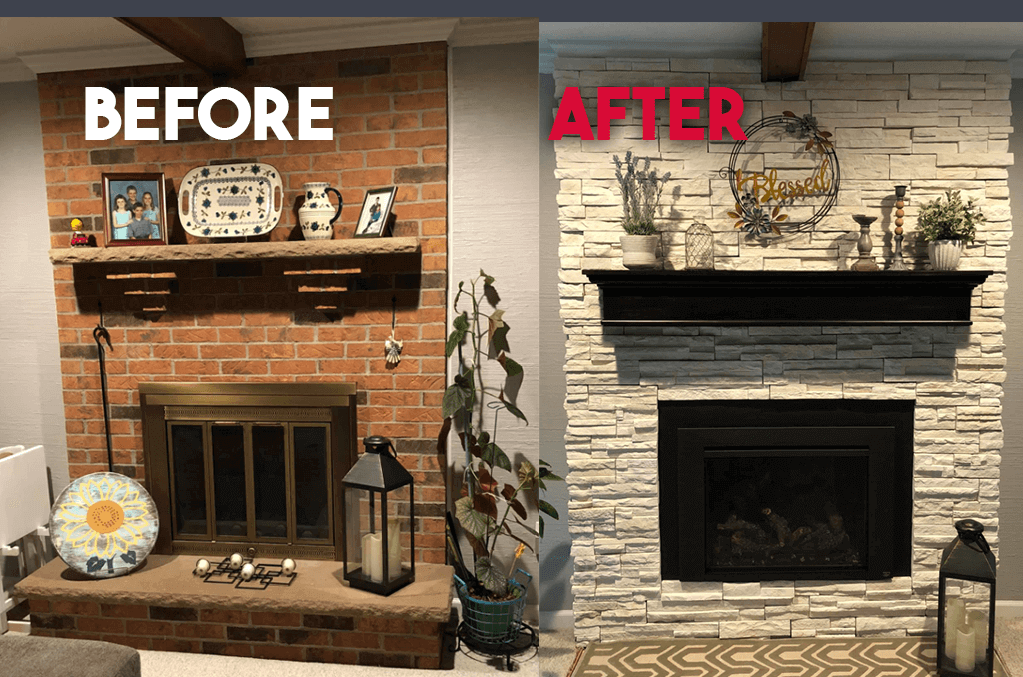An old brick fireplace often serves as the architectural soul of a room, but its dated appearance can clash with modern interiors. Remodeling these classic features presents an opportunity to preserve their inherent charm while updating their style for contemporary living. Homeowners can choose from numerous transformation approaches—from simple cosmetic refreshes to complete structural overhauls, depending on their design goals and budget. Whether aiming for a rustic-chic look with exposed brick or a sleek modern statement with smooth surrounds, a fireplace remodel significantly impacts a room’s ambiance. Careful planning ensures the new design complements the home’s architecture while addressing functional concerns like heat efficiency and maintenance requirements.
Assessing Your Existing Fireplace Structure
Before beginning any remodel, evaluate the fireplace’s current condition and functionality. Check for cracked bricks, crumbling mortar, or signs of water damage that might require repair before cosmetic updates. Determine whether the firebox and flue meet current safety standards, as older fireplaces may need professional inspection. Consider how often you use the fireplace and whether modifications could improve its heating efficiency or convert it to alternative fuel sources like gas inserts.
The fireplace’s architectural style often guides remodel decisions. Traditional brick fireplaces with arched openings suggest a different treatment than mid-century square designs. Measure the surround’s dimensions and note any unusual proportions that might affect material choices. Pay attention to the hearth’s size and height, as building codes often dictate specific clearances for combustible materials. These practical considerations ensure your beautiful new fireplace remains safe and functional.
Document the existing fireplace thoroughly with photographs and measurements before making changes. This proves invaluable if you encounter unexpected structural issues or later decide to restore original features. Note how the brick was laid, common bonds like running or Flemish affect how difficult mortar removal or cleaning might be. Understanding these details helps create a realistic remodel plan that works with your fireplace’s unique characteristics rather than against them.
Modernizing with Paint and Limewash
Painting brick offers the most dramatic transformation with minimal effort. Light colors like soft white or pale gray instantly brighten rooms and make fireplaces appear larger. For contemporary spaces, high-gloss black creates a sophisticated contrast against light walls. Proper preparation is crucial—clean bricks thoroughly and use quality masonry primer to ensure paint adhesion. Semi-gloss or satin finishes withstand heat better than flat paints while allowing some brick texture to show through.
Limewash provides a middle ground between painted and natural brick, offering a breathable coating that ages gracefully. This traditional treatment lets some brick color and texture remain visible while muting intense red tones. Unlike paint, limewash penetrates the brick surface and develops a beautiful patina over time. Application techniques range from full coverage for a uniform look to uneven “German smear” styles that preserve rustic character. Limewash works particularly well in farmhouse or cottage-style interiors.
For those hesitant to commit to permanent color changes, modern mineral-based stains offer reversible alternatives. These translucent coatings enhance brick’s natural variations while providing UV protection. Stains work well on porous, unsealed brick but may require multiple coats on glazed surfaces. Unlike paint, stains won’t peel or chip, making them lower maintenance for high-heat areas. Many products allow custom color mixing to achieve perfect harmony with your room’s palette.
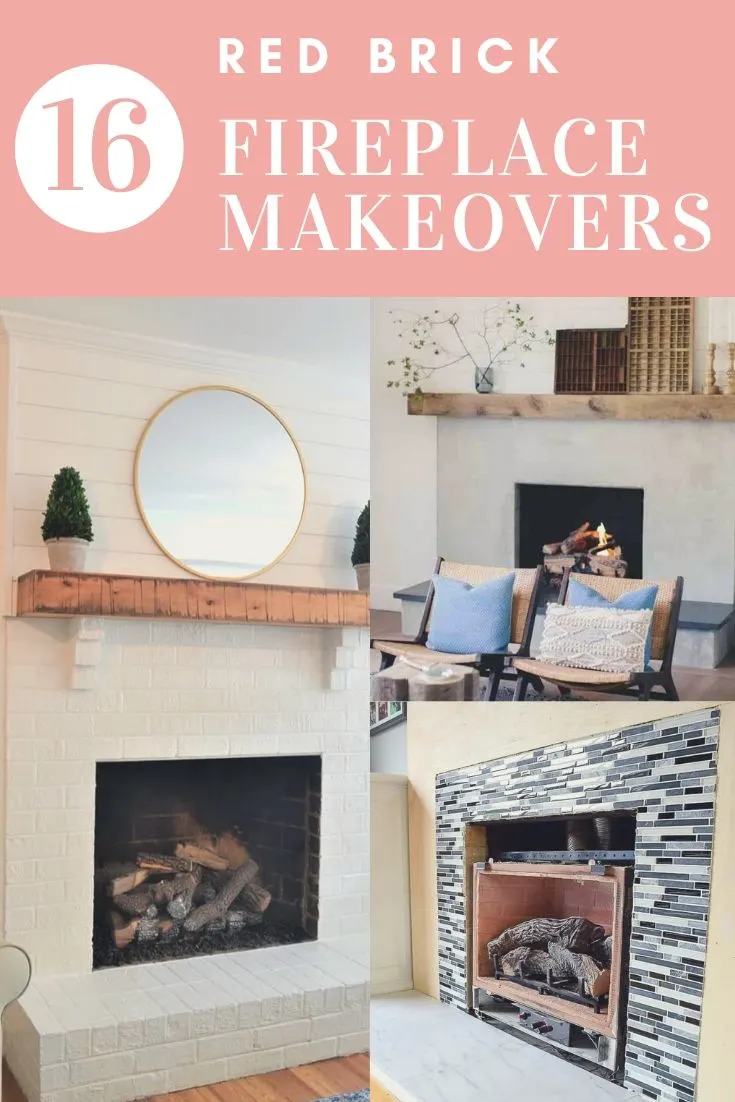
Refacing with New Materials
Stone veneer creates instant sophistication while being lighter and more affordable than solid stone. Thin-cut natural stone varieties like slate or quartzite offer authentic texture in manageable panels. Manufactured stone products replicate the look with greater consistency and easier installation. Stacked stone patterns lend rustic appeal, while smooth ashlar layouts read more contemporary. Consider how the stone’s color and scale complement surrounding walls and flooring for a cohesive look.
Tile refacing provides endless design possibilities from subway classics to bold Moroccan patterns. Large-format porcelain slabs create seamless modern surrounds with minimal grout lines. Crackle-glazed ceramic tiles add old-world charm, while metallic or glass mosaics introduce reflective surfaces. Cement tiles with geometric designs make striking focal points. Always use heat-resistant adhesives and grouts rated for fireplace applications to prevent cracking from temperature fluctuations.
Reclaimed wood surrounds bring warmth and texture to brick fireplaces. Shiplap or vertical plank installations create clean-lined farmhouse appeal, while rough-hewn beams suggest mountain lodge style. Proper spacing and fire-rated barriers ensure safety, with most codes requiring non-combustible materials within specific clearances. Combining wood with tile or metal accents balances rustic and refined elements. Consider how wood tones interact with flooring and furniture to prevent visual competition.
Structural Modifications and Opening Changes
Altering a fireplace’s opening changes its entire proportions and presence. Widening a small firebox creates better heat distribution and visual impact, while narrowing very large openings improves heating efficiency. Consider converting to an arched or linear opening to match your home’s architectural style. Any structural changes require professional assessment of load-bearing requirements and proper support for the chimney above.
Removing a dated mantel or heavy surround often modernizes a fireplace instantly. This reveals the brick’s natural beauty or creates space for simpler, contemporary mantel designs. Some homeowners choose to build out the surrounding wall to create a flush surface for ultra-modern floating mantels. Always verify what lies behind brick before demolition—some older fireplaces contain asbestos or unexpected structural elements needing special handling.
Raising or lowering a fireplace opening affects both aesthetics and function. Elevated fireplaces create dramatic focal points in rooms with high ceilings, while lower openings improve heat radiation in frequently used spaces. Consider adding built-in wood storage or display niches when modifying the surround structure. These practical additions enhance usability while contributing to the overall design scheme.
Incorporating Lighting and Display Features
Strategic lighting transforms a remodeled fireplace from daytime feature to evening showpiece. Recessed ceiling spots highlight textured surfaces without visible fixtures. LED strip lighting under mantels or in alcoves creates ambient glow. For dramatic effect, install adjustable picture lights to graze brick or stone surfaces. Consider smart lighting systems that adjust color temperature and intensity to complement different moods and occasions.
Built-in shelving or cabinetry flanking the fireplace increases functionality. Symmetrical bookcases create traditional library appeal, while asymmetrical floating shelves suit contemporary spaces. Glass-front cabinets protect displayed items from soot while allowing visibility. Consider depth variations—shallow shelves for decor, deeper ones for media components. Ensure any wood elements maintain proper clearance from the firebox opening per local codes.
Mirrors above or beside the fireplace amplify light and create spatial illusions. An oversized mirror above the mantel makes small rooms feel expansive. Antiqued finishes complement traditional decor, while frameless designs maintain modern simplicity. Consider the mirror’s relationship to television placement—positioning at slightly different angles reduces glare. Mirrored tiles arranged in geometric patterns add sparkle without overwhelming the space.
Final Finishing Touches and Styling
The mantel serves as the fireplace’s “frame,” establishing its stylistic tone. Reclaimed wood beams add rustic character, while sleek marble slabs create modern elegance. Floating mantels appear to hover for contemporary appeal. Consider proportions carefully—mantels should be deep enough to display items but not obstruct traffic flow. Many designers recommend mantel widths extending at least 6 inches beyond the firebox on each side.
Accessorizing the remodeled fireplace personalizes the space. Collections of vintage candlesticks, framed art, or organic elements like driftwood create curated displays. For safety, avoid placing flammable materials too close to the opening. Seasonal decor swaps keep the fireplace feeling fresh—evergreen garlands in winter, ceramic vases in spring. Group items in odd numbers and vary heights for visual interest.
Hearth treatments complete the remodeled look. Slate or marble hearths provide durable, easy-to-clean surfaces that complement stone surrounds. Raised hearths double as casual seating when properly proportioned. For wood-burning fireplaces, ensure hearth extensions meet local code requirements for combustible floor protection. Area rugs can define the seating zone while protecting flooring from sparks and heat.
Remodeling an old brick fireplace offers transformative potential for any living space. Whether through simple cosmetic updates or complete structural changes, these projects yield dramatic improvements in both aesthetics and functionality. Modernizing materials, adjusting proportions, and adding thoughtful lighting creates fireplaces that better serve contemporary lifestyles while honoring the home’s architectural heritage. Careful planning ensures safety and efficiency aren’t sacrificed for style. The finished result becomes more than just a heat source—it emerges as the carefully crafted heart of the home, reflecting personal taste and enhancing daily life. With numerous design approaches available, every homeowner can find the perfect balance between preserving original character and achieving their desired look.
Fireplace Makeover Ideas Before and After Regency
Brick Fireplace Update Using Cement and Aged Wood Mantel
Best Brick Fireplace Ideas to Make Your Living Room Inviting in
Red brick fireplace makeover ideas
One Room Challenge Week 3: Old Brick Fireplace Makeover The
AirStone Fireplace Makeover {From Ugly to Incredible!}
Fireplace Update Before Afters
Related Posts:





